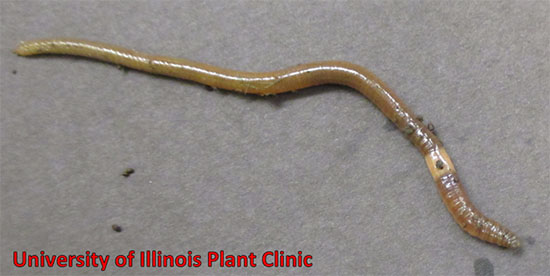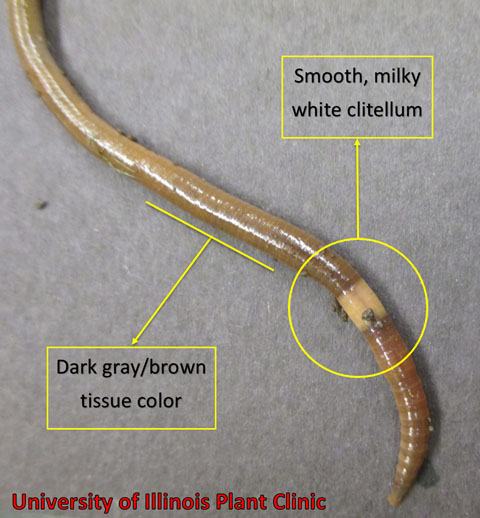Issue 16, September 16, 2015
Invasive Species Alert: Jumping Worm Confirmed in Two Counties in Illinois

The Illinois Department of Agriculture has announced that a new invasive species, the jumping worm (Amynthas spp.) was identified in Illinois for the first time. Until now, the closest identification was in Wisconsin in 2013. Samples from two counties in Illinois have been confirmed. Worms from DuPage and Cook counties were examined at the University of Illinois Plant Clinic and identified.
The earthworm is native to East Asia but has been sold in the United States as bait under the names crazy worm, Alabama jumper, and snake worms. The worm has characteristic coloration and behavior. When disturbed, jumping worms become very active, wriggling and thrashing vigorously. Adult worms are approximately the same size as the naturalized earthworms, but are much darker. Most of the tissue is dark grey/brown, with a milky white bad of tissue (the clitellum) circling the body. The clitellum is also smooth, compared to other species which are raised.
Jumping worms are voracious consumers of organic material, affecting soil quality. They breed quickly and eggs can survive our winters. Adults reach maturity in approximately 60 days, allowing populations to double during the growing season. These worms are also capable of reproducing without mating. Concerns include the effect these worms will have on native areas, ornamental plantings, and agronomic fields. Recommendations to prevent the spread of jumping worms and their eggs include cleaning equipment before moving it to another site, reducing the transportation of mulch and soil, and carefully inspecting nursery plants before installing them in a new landscape.

If you suspect you have jumping worms, please contact the University of Illinois Plant Clinic at 217-333-0519 before sending samples as there are special handling instructions. We have found that the worms are very sensitive to heat and cold and so far, no live samples have survived being sent via mail. Samples preserved in ethanol allow us to observe physical characteristics, but discoloration of the tissue may occur. Pictures of suspect worms can be sent to plantclinic@illinois.edu for preliminary identification. (Diane Plewa)
Author:
Diane Plewa